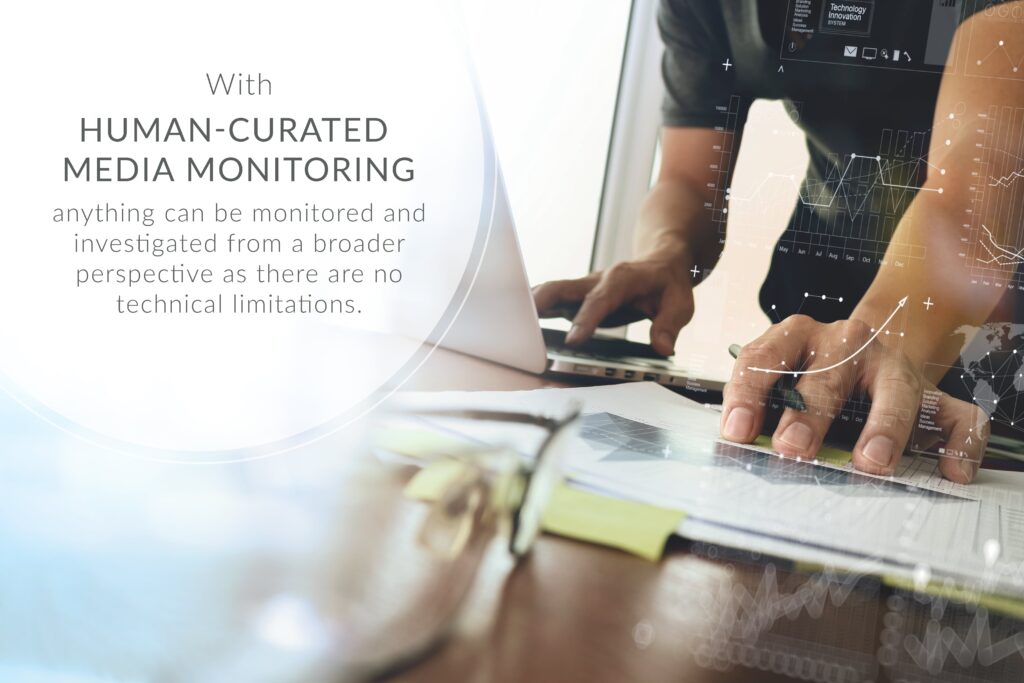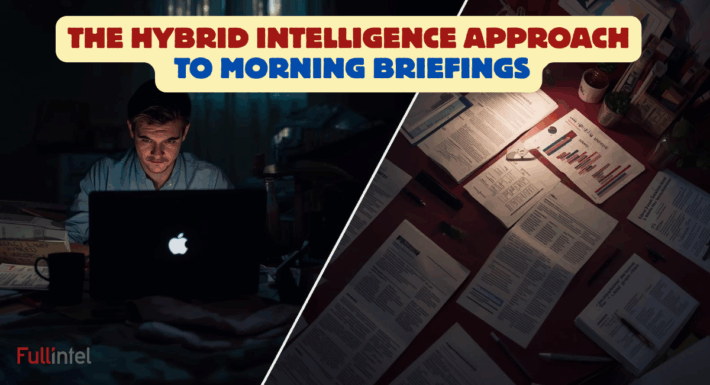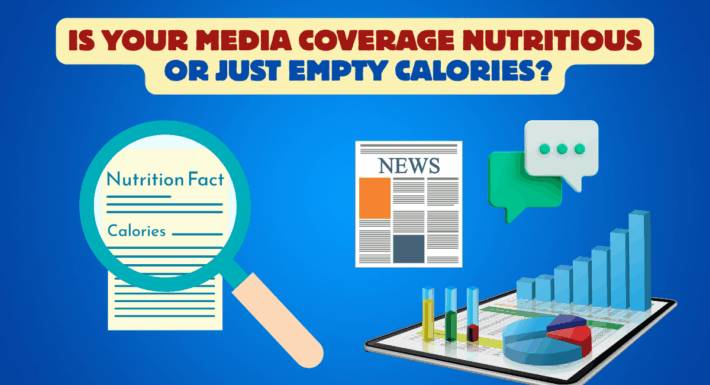5 Reasons Why You Need Human-Curated Media Monitoring

With business owners having a tremendous amount of information about their company or brand available to them, the need for effective media monitoring is now higher than ever. There are many automated media monitoring services on the market, but they aren’t a replacement for good old, human-curated media monitoring.
Curation is the process of selecting, organizing, and presenting information to gain valuable insights into what is being said about your brand. The expert doing the curation takes the time to meticulously review all sources and carefully determine which material is most relevant and valuable. Even when you’re using automated tools, you still need someone in place to identify what’s most important and then translate it into usable insights.
As a PR professional, marketing manager, or senior executive, chances are you really don’t have the time or the resources to commit to this incredibly time-consuming task. Even if you could find the time, effective and accurate curation of media mentions is a skillset best left to the pros. Your time is better spent elsewhere, and you should instead invest in a human-curated media monitoring service.
Here are five reasons why you need to take a human-curated approach to media monitoring:
1. Added Insights And Value
While software and apps may be designed to mine for data, they can’t replace the insight and context you get from human curation. Having a subject matter expert who knows how to determine what’s most valuable and provides their observations and expert analysis, can help you get the most out of media monitoring.
Human-curated news briefing with media monitoring can also save you and your organization time and money. With a real live person monitoring and identifying issues that need to be addressed in real-time, this means there’s someone actually there to catch it, flag it, and send it to the right people, so the situation can be handled immediately.
If you’re relying solely on an automated reporting service for this sort of information, the wrong set of keywords can cause a story to slip through the cracks and have far-reaching consequences depending on the nature of the issue. The opposite is also true. Too many of even the most accurate keywords can result in an inflow of unnecessary noise, leaving you to sift through many articles to find the stories that are most important to your organization.
2. Accurate Monitoring
Despite their power, there are many things software simply can’t do as well as a human. Computers aren’t able to judge nuances, such as tone, sarcasm, slang, context, or the sentiment behind a statement. This means that data may be interpreted incorrectly and reporting may not have the level of accuracy you need.
You need to be able to effectively measure the ROI of both your public relations and influencer marketing, so it’s a necessity to have data that tells a complete story. Additionally, because potential areas of concerns may be identified through your monitoring, things like understanding the sentiment of what is being said is critical. You don’t want to waste time on potential action items if they aren’t actually a real concern.
3. Customized Data Sets And Key Messages
While most media monitoring can provide you with reporting, customization usually only goes so far. When you have a human curating your data, you can create any sort of dashboard or media reporting mix with specific groups of data customized to exactly what you need for your organization.
A media monitoring expert will be able to see potential PR opportunities based on your key messages. This type of information isn’t easily captured using software and would likely be missed with automation. Reporting can also be customized for different roles within your organization and produced in a format that is best suited for each key stakeholders’ needs.
4. Competitive Tracking And Analysis
A human-curated media monitoring service can work together with you to identify key influential media sources. Those sources can then be monitored and coverage can be compared against your competitors. Your media monitoring team can look at what topics and key message the competition are using, and discover what is resonating with these top outlets.
This makes for smarter, more strategic PR and influencer marketing efforts and gives you an opportunity to leverage this information so you’re aren’t left lagging behind your competition.
5. No Gaps In Coverage
With human-curated media monitoring, anything can be monitored and investigated from a broader perspective as there are no technical limitations. Automated monitoring will always have limits to what it can do.
Your media monitoring service can find more obscure content that may be missed by a tool. Typically, tools face limitations around the content they’re searching for if it’s behind private sites and paywalls. This means certain data may be overlooked and you then need an actual person to fill in the gaps.
While starting off with an automated media monitoring service may be a good way to get a glimpse into what is being said about your brand, as a long-term solution, it can’t compare to human curation.
Using human-curated media monitoring to find opportunities to develop content that’ll grow your share of the voice in top outlets is the most effective use of media monitoring and will always be worth the investment.




